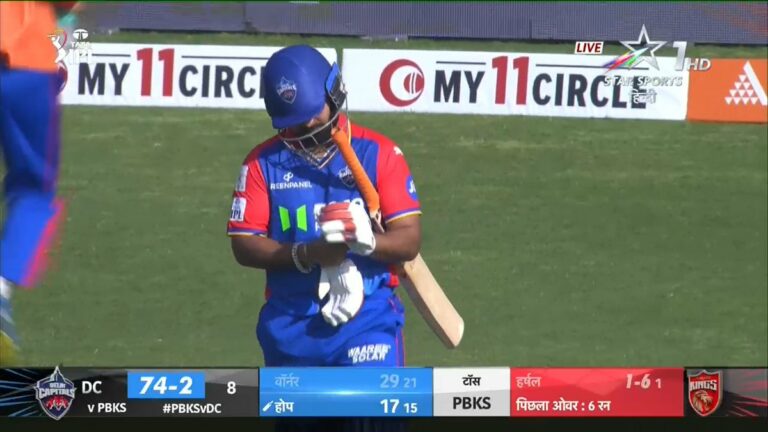Reddy Anna Book: How to Bet on Cricket’s Total Wickets Scored by a Team in the Final 10 Overs?
Cricket is a game of strategy, tension, and moments that can turn the tide in an instant. Among the many betting markets available, predicting the total wickets scored by a team in the final 10 overs of a match is one of the most thrilling options. This market focuses on the death overs—the last phase of an innings—where pressure mounts, strategies shift, and outcomes are often decided. Platforms like the Reddy Anna Book offer tools and insights to help you navigate this exciting betting opportunity. In this article, we’ll break down everything you need to know about betting on total wickets in the final 10 overs, from understanding the dynamics of gameplay to analyzing factors that influence results.
What Does “Total Wickets in the Final 10 Overs” Mean?
When betting on the total wickets scored by a team in the final 10 overs, you’re essentially predicting how many players will be dismissed during this critical phase of the innings. The final 10 overs typically occur in limited-overs formats like One Day Internationals (ODIs) and T20s, where teams aim to maximize their score or defend their total aggressively.
In these overs, the batting team often adopts a high-risk approach, attempting to accelerate the scoring rate. Meanwhile, the bowling team employs clever tactics such as slower deliveries, yorkers, and strategic field placements to pick up wickets and restrict runs. The interplay between aggression and precision makes the final 10 overs a fascinating period for both fans and bettors alike.
Platforms like the Mahadev Book ID provide real-time updates and odds for this market, allowing you to make informed decisions based on live developments. Similarly, systems like Mahadev Book ID can help you analyze historical data to identify trends and patterns.
Why Bet on Total Wickets in the Final 10 Overs?
This betting market appeals to those who enjoy the fast-paced, high-stakes nature of cricket’s closing stages. Here are some reasons why it’s worth considering:
- High-Impact Moments: The final 10 overs often determine the outcome of the match. Wickets during this phase can derail a team’s momentum, making it a pivotal area of focus.
- Dynamic Gameplay: Unlike earlier phases of the innings, the death overs feature aggressive batting and calculated bowling. This creates opportunities for frequent wickets, adding excitement to your bets.
- Data-Driven Predictions: With access to detailed statistics through platforms like Mahadev Book ID, you can study past performances and tailor your predictions accordingly.
Whether you’re a casual fan or someone looking to refine your betting skills, this market offers a unique blend of challenge and reward.
Factors That Influence Total Wickets in the Final 10 Overs
Predicting the number of wickets in the final 10 overs requires a deep understanding of the variables at play. Below, we’ll explore the key factors that shape this phase of the game.
1. Batting Team’s Strategy
The approach adopted by the batting team significantly impacts the likelihood of wickets falling. Teams chasing a target may take greater risks to keep up with the required run rate, increasing the chances of dismissals. Conversely, teams batting first might focus on consolidating their position before accelerating, which could lead to fewer wickets if they succeed in building partnerships.
For example, aggressive hitters like AB de Villiers or Jos Buttler are known for their ability to clear boundaries but also risk getting out while attempting big shots. Understanding the mindset of the batting lineup helps you gauge the potential for wickets.
2. Bowling Team’s Tactics
The bowling team’s strategy plays an equally important role. Bowlers in the death overs rely on variations such as slower balls, bouncers, and pinpoint yorkers to unsettle batsmen. Captains also adjust field placements to create pressure, often setting catching fields or placing extra fielders on the boundary.
Teams with experienced bowlers who excel in the death overs—such as Lasith Malinga or Jasprit Bumrah—are more likely to pick up wickets consistently. Analyzing the quality and form of the bowling attack is crucial when making predictions.
3. Pitch and Weather Conditions
Pitch conditions evolve over the course of a match, particularly in longer formats. A dry pitch may assist spinners, while cracks or uneven bounce can favor seam bowlers. These factors increase the probability of wickets in the final 10 overs.
Weather conditions also come into play. Overcast skies aid swing bowlers, while humid weather can make gripping the ball difficult for spinners. Monitoring these elements ensures you account for external influences in your predictions.
4. Match Context and Pressure Situations
The context of the match heavily affects how teams approach the final 10 overs. In knockout games or series deciders, the pressure to perform can lead to mistakes, resulting in more wickets. On the other hand, dead-rubber matches might see relaxed gameplay, potentially reducing the number of dismissals.
Additionally, the margin between the required run rate and the current score influences decision-making. If a team is well ahead of the required rate, they may adopt a safer approach, leading to fewer wickets. Conversely, a steep run rate forces batsmen to take risks, increasing the likelihood of dismissals.
5. Player Form and Matchups
Individual player performances matter immensely in the final 10 overs. Batsmen in good form are less likely to get out, while struggling players may succumb to pressure. Similarly, bowlers with recent success against certain opponents can exploit weaknesses and pick up wickets.
Using resources like the Mahadev Book ID system, you can study head-to-head matchups between key players. For instance, if a particular bowler has dismissed a top-order batsman multiple times in the past, it increases the likelihood of a wicket in the final 10 overs.
Strategies for Betting on Total Wickets
Now that we’ve covered the influencing factors, let’s discuss practical strategies for improving your chances of success when betting on total wickets in the final 10 overs.
1. Study Historical Data
One of the most effective ways to predict future outcomes is by studying historical data. Platforms like Mahadev Book ID offer access to extensive databases containing match statistics, venue analyses, and player profiles. Look for trends such as average wickets in the final 10 overs at specific grounds or against particular opponents.
For example, venues like Eden Gardens in India or the Melbourne Cricket Ground (MCG) have distinct characteristics that affect gameplay. By analyzing past performances at these venues, you can identify patterns that inform your predictions.
2. Evaluate Team Strengths and Weaknesses
Every team has strengths and weaknesses that manifest differently in various scenarios. Strong lower-order batting lineups are less likely to lose multiple wickets quickly, while disciplined bowling attacks can capitalize on mistakes and pick up wickets. Assessing these aspects before placing your bet gives you a clearer picture of what to expect.
3. Monitor Real-Time Updates
Cricket is a dynamic sport, and real-time updates can drastically alter your assessment of the game. Keep track of live scores, wicket falls, and partnerships forming during the final 10 overs. Platforms like the Reddy Anna Book provide instant notifications, ensuring you stay ahead of developments.
4. Consider Format-Specific Nuances
Different formats demand different approaches. In ODIs, teams often build a foundation before accelerating in the death overs, leading to a mix of caution and aggression. In T20s, the entire innings revolves around maximizing scoring opportunities, resulting in higher risks and more frequent wickets. Tailor your predictions accordingly to align with the format being played.
Common Pitfalls to Avoid
While betting on total wickets in the final 10 overs can be rewarding, it’s easy to fall into traps that diminish your chances of success. Here are some common mistakes to avoid:
1. Ignoring Venue Characteristics
Each stadium has unique features that affect gameplay. Failing to account for these differences can lead to inaccurate predictions. For instance, pitches with grass cover or uneven bounce increase the likelihood of wickets, while flat tracks favor the batsmen.
2. Overlooking Weather Reports
Weather reports provide critical information about potential swing or seam movement. Disregarding these updates can lead to misguided predictions. Always check the forecast before finalizing your bet.
3. Relying Solely on Recent Form
While recent form is important, it shouldn’t be the sole basis for your decision. A player’s overall record, experience in similar situations, and adaptability to changing conditions should also be considered.
Tools and Resources for Better Predictions
To maximize your chances of success, leverage the following tools and resources:
- Mahadev Book ID: This system provides access to comprehensive databases containing match statistics, player profiles, and venue analyses. Use it to gather relevant data for your predictions.
- Reddy Anna Book Platform: Known for its user-friendly interface and reliable odds, this platform allows you to place bets confidently. Its real-time updates ensure you never miss out on crucial developments during a match.
- Cricbuzz and ESPN Stats: Websites like Cricbuzz offer detailed match analyses, player stats, and expert commentary. These resources can supplement your research efforts.
Conclusion
Betting on the total wickets scored by a team in the final 10 overs of a cricket match combines the excitement of the game with the intellectual challenge of prediction. It requires a deep understanding of cricketing strategies, careful analysis of influencing factors, and strategic decision-making. By leveraging platforms like the Reddy Anna Book and utilizing systems like Mahadev Book ID, you can enhance your ability to make informed bets.
Remember, patience and diligence are key. Take the time to study the variables at play, avoid common pitfalls, and continuously refine your approach. With practice and persistence, you’ll not only enjoy the drama of cricket’s final overs but also develop a keen eye for spotting profitable opportunities. Whether you’re a casual fan or someone looking to build a career around sports betting, mastering this aspect of cricket betting can open doors to countless possibilities.
So, the next time you watch a cricket match, pay close attention to the final 10 overs. Who knows? You might just uncover the winning formula for your next bet!







